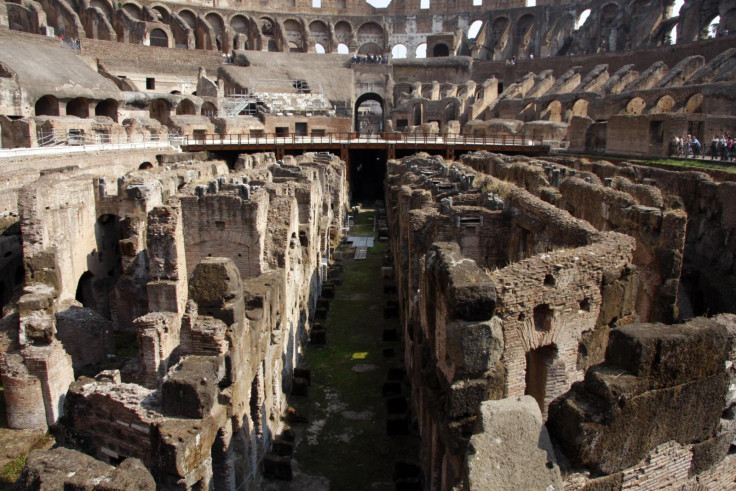Why the Pantheon has not crumbled: Roman concrete mortar used secret ingredient that could reduce carbon emissions

Ancient Roman architecture has managed to stand the test of time for 2,000 years because the concrete mortar used for the structures included a secret ingredient, scientists have discovered.
Monuments such as the Pantheon, Colosseum, and Trajan's Markets were built with mortar made from volcanic ash, researchers at the US Department of Energy's Lawrence Berkeley National Laboratory have found.
Using advanced x-rays, the team studied a reproduction of Roman volcanic ash-lime mortar that had previously been subjected to fracture testing experiments.
A "superconducting bending magnet X-ray micro-diffraction beamline" was used to look at the changes that took place in the curing of mortar over 180 days, then comparing the findings to the 1,900-year-old samples.
Published in the journal Proceedings of the National Academy of Sciences, they discovered a crystalline binding hydrate that prevents micro-cracks from occurring.
The mortars used to bind the concrete structures is a mixture of 85% volcanic ash, fresh water and lime, which is calcined at a much lower temperature than modern cement. Coarse chunks of volcanic tuff formed up to 45% of the concrete.
Study leader Marie Jackson, from the University of California Berkeley, said the mortar resists cracking through a crystallisation process that reinforces the cement.

These "strätlingite crystals" formed in tiny spaces around sand and small bits of volcanic material that bound them together more tightly, making the mix more crack resistant.
"The dense intergrowths of the platy crystals obstruct crack propagation and preserve cohesion at the micron scale, which in turn enables the concrete to maintain its chemical resilience and structural integrity in a seismically active environment at the millennial scale," Jackson said.
Experts are interested in the composition of Imperial Rome structures because of the environmental advantages they offer.
Modern concretes are mostly bound by limestone-based Portland cement, which requires heating to 1,450C – a process that releases an estimated 7% of the total carbon emitted into the atmosphere every year.
Because the Roman cement does not need to be heated to such temperatures, there is a big reduction on carbon emissions.
"If we can find ways to incorporate a substantial volumetric component of volcanic rock in the production of specialty concretes, we could greatly reduce the carbon emissions associated with their production also improve their durability and mechanical resistance over time," Jackson added.
© Copyright IBTimes 2025. All rights reserved.






















